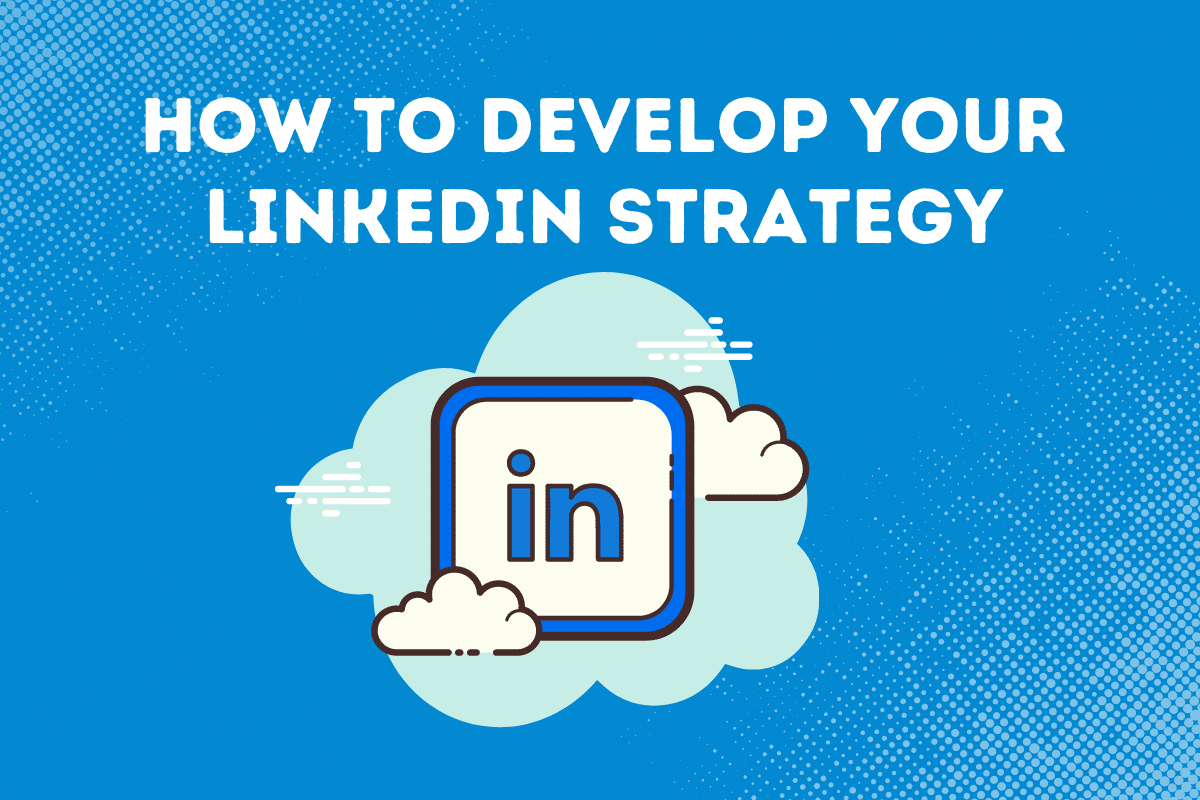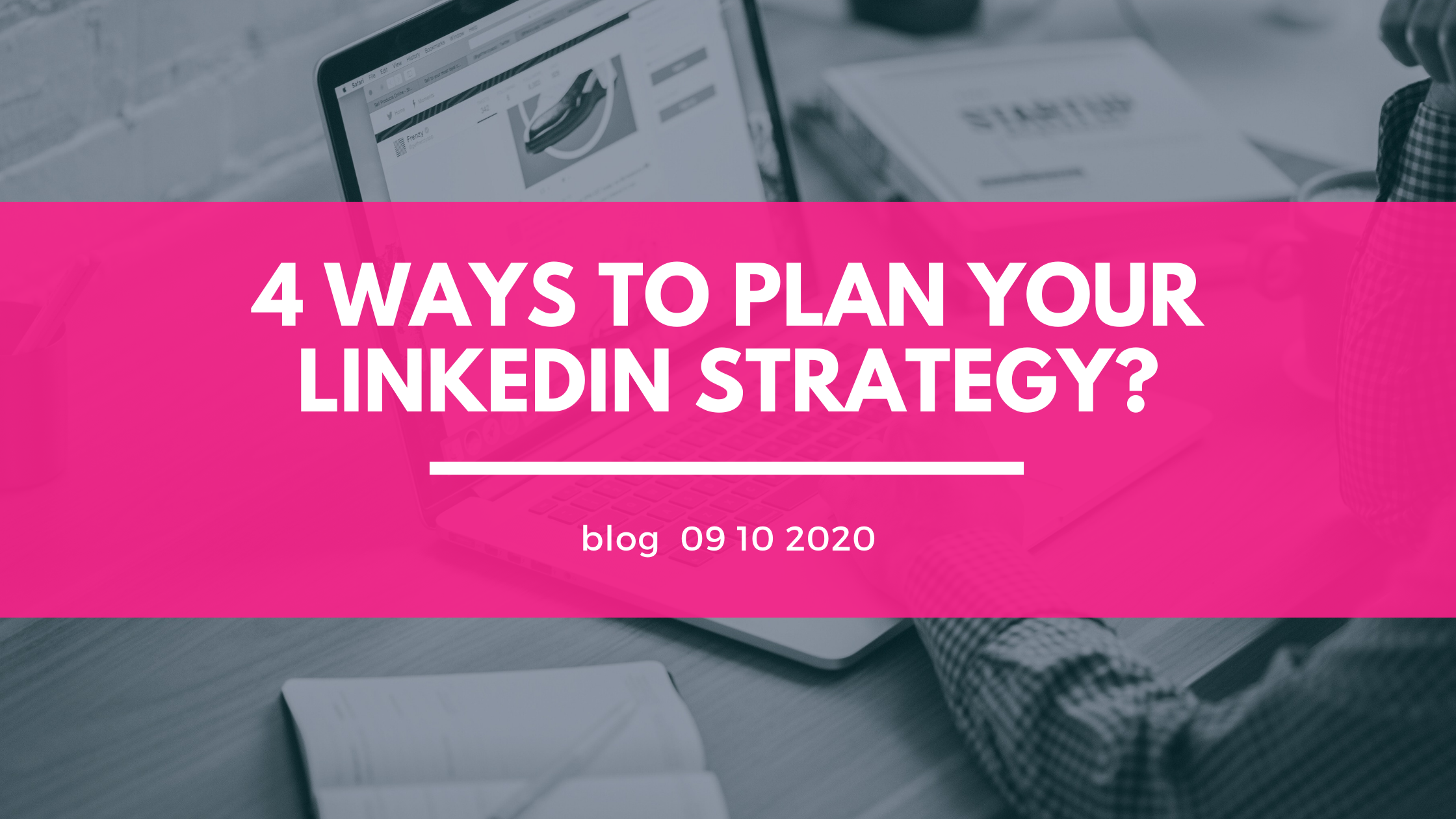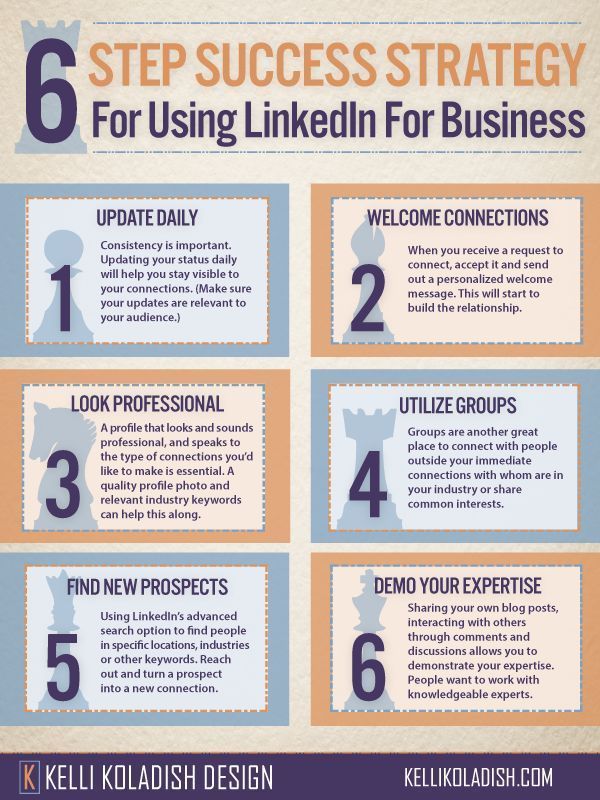In today’s digital world, LinkedIn isn't just a platform for networking; it's a powerful tool for job hunting. Whether you’re a recent graduate or a seasoned professional, utilizing LinkedIn can significantly enhance your job search. This platform connects you with potential employers and industry peers, showcasing your skills and experiences in a way that traditional job applications often miss. Let’s dive into how to leverage
Setting Up Your LinkedIn Profile for Success

Your LinkedIn profile is like your online resume, but with a twist. It's not just about listing your job history; it's an opportunity to create a personal brand that stands out. Here’s how to set up a compelling LinkedIn profile that attracts recruiters and opens doors.
1. Choose a Professional Photo:
- Use a clear, high-resolution headshot.
- Dress appropriately for your industry.
- Smile and convey confidence!
2. Craft a Captivating Headline:
Your headline should do more than state your job title. It’s your chance to make an impression. Instead of just “Marketing Specialist,” consider something like “Creative Marketing Specialist | Passionate about Digital Strategy & Brand Growth.” This tells potential employers what you do and what you’re excited about!
3. Write an Engaging Summary:
Your summary is a place to tell your story. Stick to about 3-5 short paragraphs and focus on:
- Your professional journey and what drives you.
- Key skills and achievements.
- A personal touch – perhaps a hobby or interest that complements your professional life.
Be authentic; let your personality shine through!
4. Highlight Your Experience and Skills:
When detailing your job experience, use bullet points for clarity. Each role should demonstrate your impact with quantifiable results. For example:
| Position | Responsibilities | Achievements |
|---|---|---|
| SEO Specialist | Developed content strategies. | Increased website traffic by 40% in 6 months. |
| Project Manager | Led team of 5 on software projects. | Delivered projects 2 weeks early, under budget. |
Also, don’t forget to add relevant skills that relate to your industry; they help you appear in search results!
5. Get Recommendations:
Recommendations from colleagues or managers can provide social proof of your capabilities. Don’t hesitate to ask for them or give them in return! A strong recommendation can set you apart from the competition.
6. Customize Your LinkedIn URL:
By following these steps, you’ll have a LinkedIn profile that not only showcases your professional experience but also resonates with potential employers. A well-crafted profile is your first step toward opening new career opportunities through LinkedIn!
Also Read This: Can You Cancel LinkedIn Premium After the Free Trial? A Complete Guide
3. Building a Strong Professional Network

When it comes to landing a job through LinkedIn, having a strong professional network is absolutely vital. Think of it as your online support system—you want to surround yourself with connections who can help pave the way to your next opportunity. So, how do you go about building that network effectively? Let’s dive in!
Start with Your Current Connections
Begin by leveraging the connections you already have. Reach out to former colleagues, classmates, and industry acquaintances. A simple message to reconnect can open doors. Consider saying something like:
"Hi [Name], I hope you're doing well! I wanted to reach out and reconnect since we're both in [industry/field]. I'd love to hear about what you've been up to!"
Expand Beyond Your Comfort Zone
Don’t stop at just familiar faces. Actively seek out professionals in your field or related areas. Use LinkedIn's search features to find people with similar interests, or check if your connections are linked to industry leaders. Join relevant groups where discussions happen, and don't hesitate to send connection requests to people who inspire you.
Personalize Your Connection Requests
When you find someone you’d like to connect with, always personalize your request! A generic request feels cold and can often get ignored. Instead, mention something specific. For example:
"Hi [Name], I came across your profile while researching trends in [topic/industry]. I'm really impressed with your work on [specific project]. I’d love to connect and share insights!"
Engage and Nurture Relationships
Simply connecting isn’t enough. You need to engage and nurture these relationships. Like, comment, and share their posts to stay on their radar. When you engage, you're continuing the relationship and establishing yourself as a thoughtful professional.
Attend Networking Events and Webinars
If you want to take things a step further, consider attending virtual networking events or industry webinars. These platforms provide the perfect opportunity to meet new professionals and expand your circle. After these events, follow up on LinkedIn with a personalized note like:
"Hi [Name], it was great connecting during [event]! I enjoyed our discussion about [topic]. Let’s keep in touch!"
In short, building a strong professional network on LinkedIn isn’t just about the numbers; it’s about creating meaningful connections that can lead to incredible job opportunities. With intentional effort and a genuine approach, you’ll be well on your way to expanding your professional canvas!
Also Read This: How to Delete a LinkedIn Company Page: A Quick Guide
4. Engaging with Content to Increase Visibility

Now that you’ve built a strong network, it’s time to focus on visibility. In the crowded digital space of LinkedIn, content engagement is key! Sharing valuable insights and being active on the platform can significantly boost your profile visibility, making it easier for potential employers to find you.
Share Thoughtful Content
One way to engage with your network is by sharing relevant content. This could be articles, industry news, or even your own thoughts on trends affecting your field. Ensure your posts are engaging and thought-provoking. Try to add a personal touch; share how certain topics resonate with your experience. For example:
"I just read an article on the future of [industry]. It’s fascinating to see how [specific trend] is changing the landscape! I believe that adapting to these changes will be key to success in 2024."
Comment Wisely
Another effective way to increase visibility is by commenting on posts by others in your network. Share your insights or ask insightful questions. Not only does this highlight your expertise, but it also puts you in front of others who may not know you yet. It's all about creating meaningful conversations!
Use Multimedia: Images and Videos
Don’t underestimate the power of visuals! Posts with images or videos tend to receive more engagement. If you can, create videos discussing industry trends or share infographics related to your field. These not only capture attention but also showcase your knowledge in an engaging way.
Maintain Consistency
Visibility won’t happen overnight. It’s essential to be consistent with your content engagement. Aim to post regularly—whether that’s weekly or bi-weekly. Create a content calendar to help keep track of what you want to share and when.
Ask for Recommendations
Lastly, don’t shy away from asking for recommendations from colleagues and managers. A well-crafted recommendation can enhance your profile immensely and catch the eye of recruiters. Just be sure to return the favor and write recommendations for others as well!
In summary, engaging with content on LinkedIn is about sharing your expertise and showing up consistently. By actively participating in discussions and sharing valuable information, you’ll position yourself as a go-to expert, making it easier for employers to discover you! Let your voice be heard loud and clear!
Also Read This: How Many Connection Requests Can You Send with LinkedIn Premium?
5. Utilizing Job Search Features on LinkedIn
When it comes to finding a job, LinkedIn isn't just a social network; it’s a powerful job search engine. The platform offers various features designed to help you find positions that align with your skills and aspirations. Let's dive into how you can leverage these tools effectively.
1. Job Search Tool: Start by navigating to the “Jobs” section at the top of your LinkedIn homepage. Here, you can filter job postings based on parameters such as location, experience level, and company size. Utilize the “Easy Apply” feature for positions you're eager about; it allows you to apply quickly using your LinkedIn profile, saving you time and effort.
2. Job Alerts: Setting up job alerts is a game-changer! You can specify the types of job listings you want to be notified about, and LinkedIn will send these to your inbox or as notifications. This means you won’t miss out on opportunities that match your interests. To set this up, just click on the job filters, select your preferences, and toggle the job alerts option.
3. Salary Insights: Understanding salary expectations is crucial before you step into job negotiations. LinkedIn provides estimated salary ranges based on role, location, and other factors. Use this data to gauge whether a job offer aligns with industry standards.
4. Company Insights: Before applying, research the companies you’re interested in. LinkedIn's “Company Page” offers insights into company culture, employee experiences, and recent updates. Knowing about the company can help you tailor your application and impress in interviews.
5. Networking Opportunities: After you find job positions that interest you, look for those recruiters or hiring managers who've posted the job. Consider sending them a polite message or engaging with their content. A little effort in networking can go a long way in getting noticed.
In summary, utilizing LinkedIn’s job search features is essential for a comprehensive job search strategy. Whether it’s the advanced search filters or the ability to set alerts, these tools are designed to help you navigate your job hunt with confidence and agility.
Also Read This: Best Gemstones for Earrings to Pair with a White Dress
6. Crafting Effective Connection Requests
When you want to expand your professional network on LinkedIn, sending personalized connection requests is key. A well-crafted request can make a significant difference in whether or not your message gets accepted. Let’s explore some best practices for creating effective connection requests.
1. Personalization is Key: Always personalize your connection requests. A simple template won't do. Start by mentioning how you found their profile or why you're interested in connecting. For example:
- “Hi [Name], I came across your profile while researching [Industry/Company], and I really admire your work in [Specific Project/Expertise].”
- “Hi [Name], I noticed we're both members of the [Common Group] and share mutual interests in [Field].”
This shows that you’re genuinely interested and not just mass-sending requests.
2. State Your Intent: Clearly state why you want to connect. Are you seeking advice, looking to explore job opportunities, or just interested in expanding your network? A well-defined purpose can make your connection request more compelling. For example:
“I’m looking to learn more about [specific topic/industry], and I’d love to connect and gain insights from your experiences.”
3. Keep it Brief: People appreciate brevity. While it’s important to be personal, the connection request should be concise—ideally no longer than a couple of sentences. This makes it easier for the recipient to read and respond without feeling overwhelmed.
4. Follow Up: If your request is accepted, consider sending a follow-up message thanking them and suggesting a way to engage further, like a virtual coffee chat. This opens the door for conversation and relationship-building.
5. Maintain Professionalism: Always maintain a professional tone. Avoid overly casual language and ensure your profile is polished before reaching out. A well-presented profile can enhance your credibility and make the request more appealing.
In essence, crafting effective connection requests on LinkedIn is all about personalization, clarity, and professionalism. By taking the time to write thoughtful requests, you’re likely to see higher acceptance rates and build a more meaningful network.
Also Read This: How to Write Engaging LinkedIn Posts: Tips for Creating Impactful Content
7. Tips for Reaching Out to Recruiters and Hiring Managers
Reaching out to recruiters and hiring managers on LinkedIn can feel a bit daunting, but it doesn’t have to be! Remember, the goal here is to establish a genuine connection, not to come off as desperate for a job. Here are some tips to help you craft that perfect message:
- Personalize Your Message: Always address the person by their name. A simple “Hello [Name]” can make your message stand out. Mention how you found them—perhaps through a mutual connection or a specific job posting.
- Keep It Concise: Time is valuable, so get to the point. Briefly introduce yourself, explain why you’re reaching out, and express your enthusiasm for the role or company. A few thoughtful sentences are often enough.
- Show Some Research: Mention something specific about the company or the recruiter’s work. This could be a recent article they wrote, their involvement in a particular project, or the company’s recent achievements. This shows you’ve done your homework and aren’t just copying and pasting messages.
- Ask Open-Ended Questions: Instead of just asking if they have any job openings, ask them about the company culture or upcoming projects they’re excited about. This can lead to a more engaging conversation.
- Be Respectful of Their Time: Understand that not everyone will respond immediately—or at all. If you don’t hear back, it’s okay to follow up after a week or so, but do this respectfully and without pressure.
- Include a Call to Action: End your message with a polite invitation for further conversation. For example, “I’d love to connect and learn more about opportunities at [Company].” This encourages a response without being too pushy.
By following these tips, you'll increase the likelihood of receiving a favorable response from recruiters and hiring managers. Remember, every interaction is an opportunity to build your network!
Also Read This: How to Manage Job Alerts on LinkedIn
8. Preparing for Interviews and Following Up
Congratulations, you’ve made it to the interview stage! This is an exciting moment, but preparation is key to making a great impression. Here are some strategies to help you ace those interviews:
- Research the Company: Go beyond the basics! Understand their mission, values, recent news, and anything else that reflects their culture. This will help you tailor your responses during the interview.
- Practice Common Interview Questions: While you can't predict every question, practicing answers to common ones (like, “Tell me about yourself” or “What are your strengths and weaknesses?”) can boost your confidence. Try to incorporate specific examples that highlight your skills and accomplishments.
- Prepare Questions to Ask: An interview is a two-way street. Prepare thoughtful questions about the team, the company culture, or potential challenges in the role. This shows your interest and helps you determine if the company is the right fit for you.
- Dress Appropriately: First impressions matter! Choose an outfit that’s professiona based on the company culture, whether it’s business casual or more formal. Feeling good in what you wear can boost your confidence.
- Follow Up After the Interview: Send a thank-you note or email within 24 hours. Thank the interviewer for their time and express your enthusiasm for the position. This small gesture keeps you on their radar and shows professionalism.
Preparing for interviews can be nerve-wracking, but with the right approach, you can showcase your best self. And don’t forget, following up is just as important as the interview itself. It demonstrates your interest and appreciation, creating a lasting impression!
Conclusion and Next Steps
In conclusion, leveraging LinkedIn effectively can significantly enhance your job search. By implementing the strategies outlined above, you can create a polished profile, expand your network, and actively engage with industry professionals. Here’s a quick recap of the key steps to take:
- Optimize Your Profile: Ensure your profile is complete, including a professional photo, compelling summary, and detailed experience.
- Expand Your Network: Connect with colleagues, alumni, and industry professionals to broaden your reach.
- Engage with Content: Share insightful articles, participate in discussions, and comment on posts to establish your expertise.
- Utilize Job Search Features: Follow companies, set job alerts, and apply directly through LinkedIn to streamline your search.
As you move forward, consider the following next steps to keep your job search dynamic and effective:
- Regularly update your profile to reflect new skills and experiences.
- Dedicate time each week to nurture your connections and engage with their content.
- Practice makes perfect; consider informational interviews to hone your networking skills.
- Stay informed about the latest trends in your industry to maintain relevant conversations.
By consistently applying these practices and staying active on LinkedIn, you will position yourself as a desirable candidate and increase your chances of landing your dream job. Embrace this journey, adapt as needed, and remember that perseverance is key in the job market.
 admin
admin








